Tongue-Keyboard: A New Typing Method Powered by Your Tongue
The Tongue-Keyboard is an innovative, non-invasive text input system that enables users to type through tongue gestures. Designed specifically for individuals with motor impairments, it serves as an alternative to traditional keyboards and touch-based interfaces.
Unlike existing assistive input methods, such as eye-tracking or voice recognition, the Tongue-Keyboard provides a fatigue-free, noise-independent, and intuitive user experience. The system maps letters to multiple "tongue keys," allowing users to input text through precise tongue movements. It supports two operation modes and includes a Dynamic Vocabulary Bank (DVB) for enhanced word prediction and selection.
System Design and Operation
The Tongue-Keyboard assigns letters to a structured layout of tongue keys, enabling users to select keys using specific tongue gestures. To accommodate varying interaction styles, the system operates in two distinct modes:
- Typing Mode: Users select individual letters through tongue taps.
- Selecting Mode: Users navigate through predicted word suggestions generated by the DVB to reduce the number of required inputs.
This dual-mode operation provides a balance between precision and efficiency, adapting to different user needs.
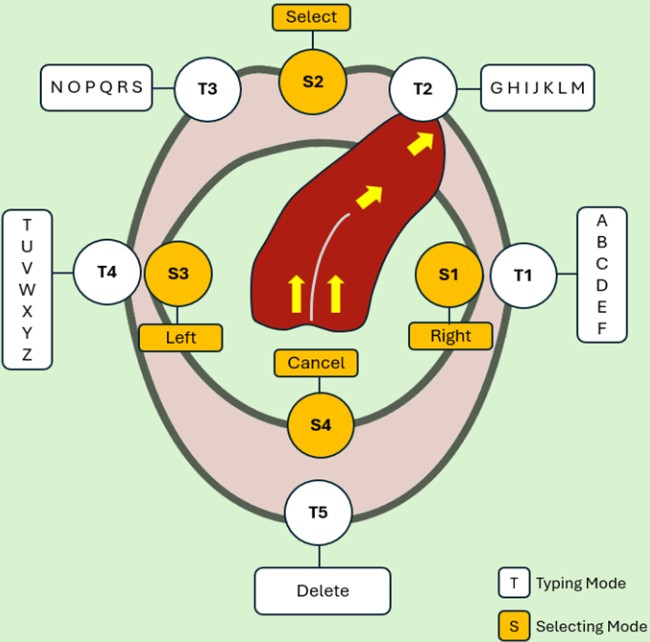
The Tongue-Keyboard incorporates structured control logic for activation, deactivation, and mode switching. Users can turn the keyboard on or off using predefined tongue gestures or sustained actions, minimizing the risk of accidental activation. Mode transitions are triggered by distinct gestures, allowing seamless switches between typing and selection modes (Figure 22).


Word Prediction with Dynamic Vocabulary Bank (DVB)
The DVB improves typing efficiency by providing real-time word predictions as users enter text. The system suggests likely word completions based on partial input, reducing the need for complete manual typing. The DVB adapts dynamically, prioritizing frequently used words and refining suggestions based on context, thereby minimizing input effort and enhancing overall usability.
Experiments
A series of controlled experiments were conducted to assess the performance of the Tongue-Keyboard.
Tongue Key Recognition
In the first experiment, 12 participants were asked to tap predefined random keys in both typing and selecting modes within a 2-second time frame. The results showed an average recognition accuracy of 90.83% in typing mode and 92.5% in selecting mode, demonstrating the system’s reliable tongue gesture recognition.
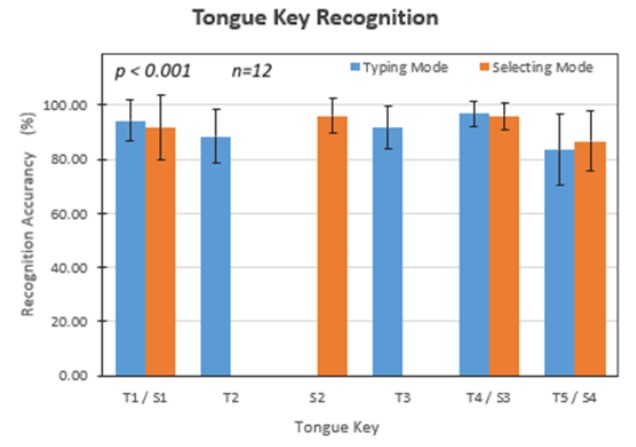
Letter Typing Accuracy
The second experiment evaluated letter typing accuracy. Participants were instructed to type a pre-generated list of letters within one minute, completing five trials each. The results revealed an average letter typing accuracy of 84.72% ± 7.3%, indicating consistent and repeatable performance across trials.
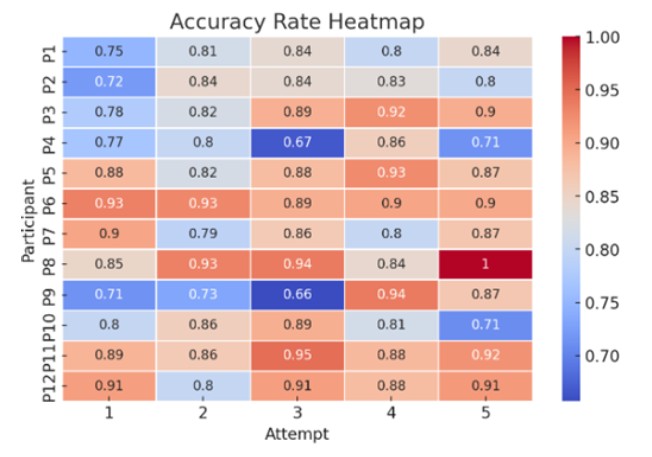
Typing Speed
To assess word typing speed, participants typed five predefined sentences. The Words Per Minute (WPM) rate was calculated, yielding an average WPM of 4.67 ± 1.06, highlighting the system’s efficiency in text entry with word prediction support.
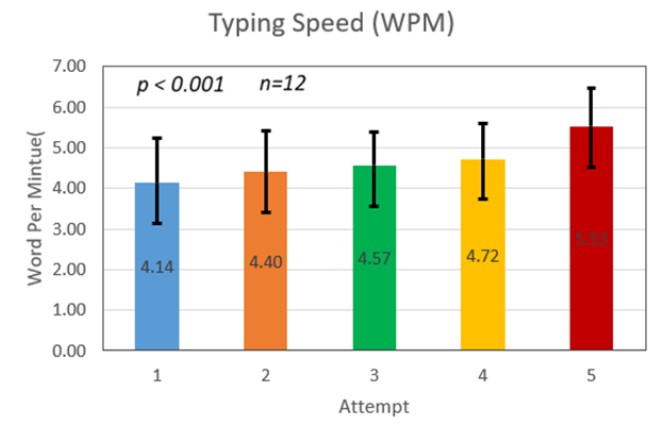
Learnability Improvement
To evaluate learnability, participants’ typing times were compared across multiple trials. Results showed a progressive improvement, with the average typing time decreasing from 156 ± 46 seconds in the first trial to 112 ± 22 seconds in later trials, demonstrating a clear learning effect.
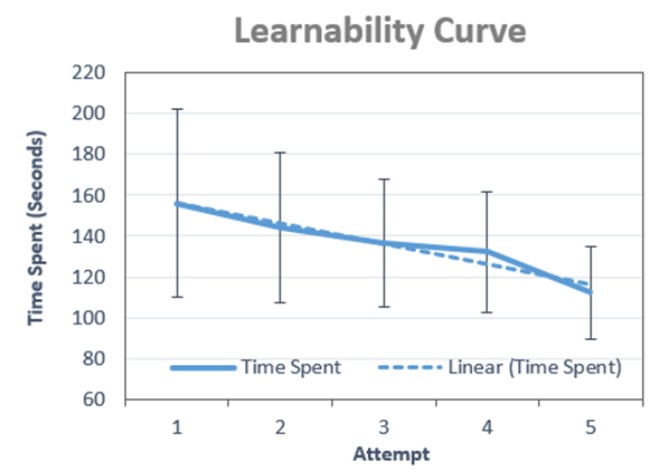
Demo Video
Watch the Tongue-Keyboard in action, demonstrating hands-free typing with the custom 9-key layout and Dynamic Vocabulary Bank (DVB) for word prediction.
Conclusion
The Tongue-Keyboard offers a novel, hands-free text input method for users with motor impairments. Experimental results confirm high recognition accuracy, consistent typing performance, and strong learnability, positioning it as a promising assistive technology. Future work will focus on further optimizations, personalization features, and integration with other HMIs to enhance accessibility and communication.